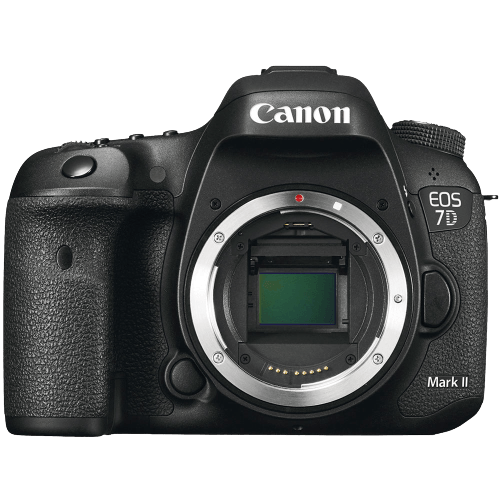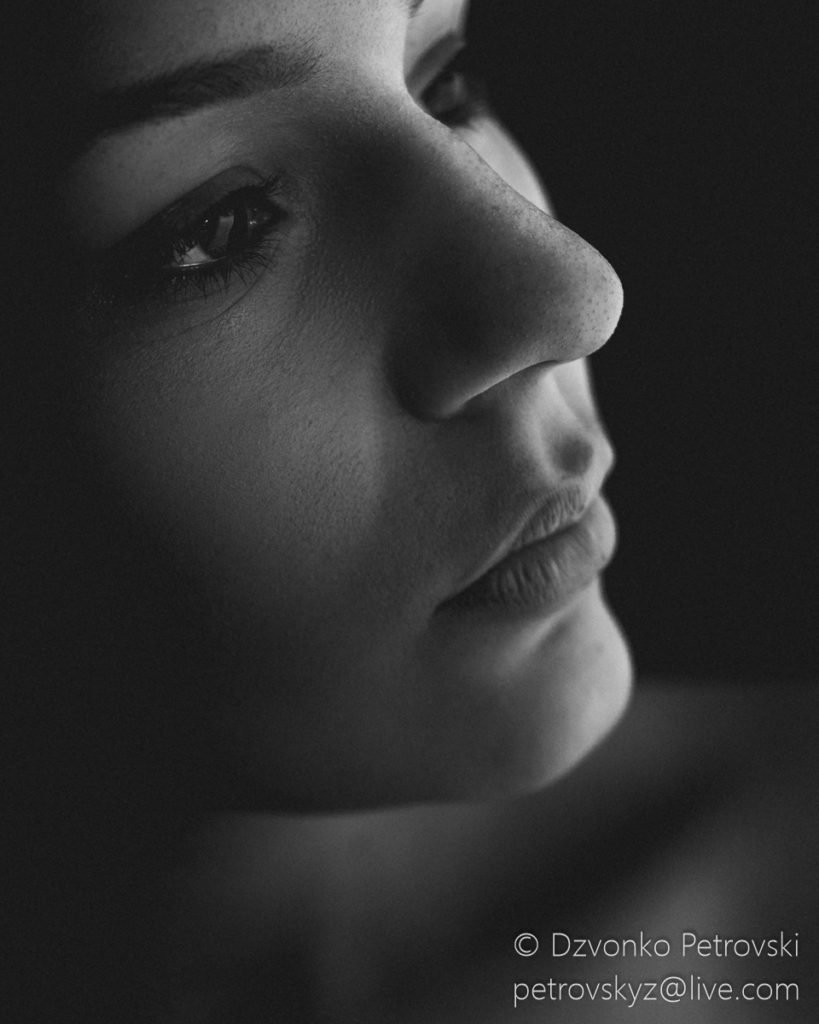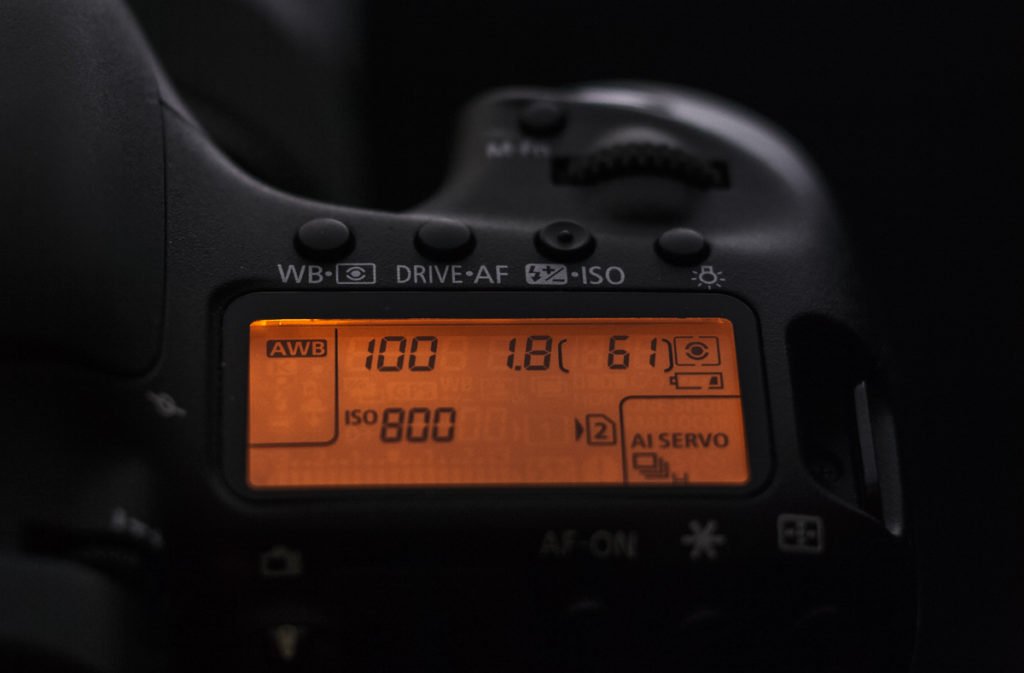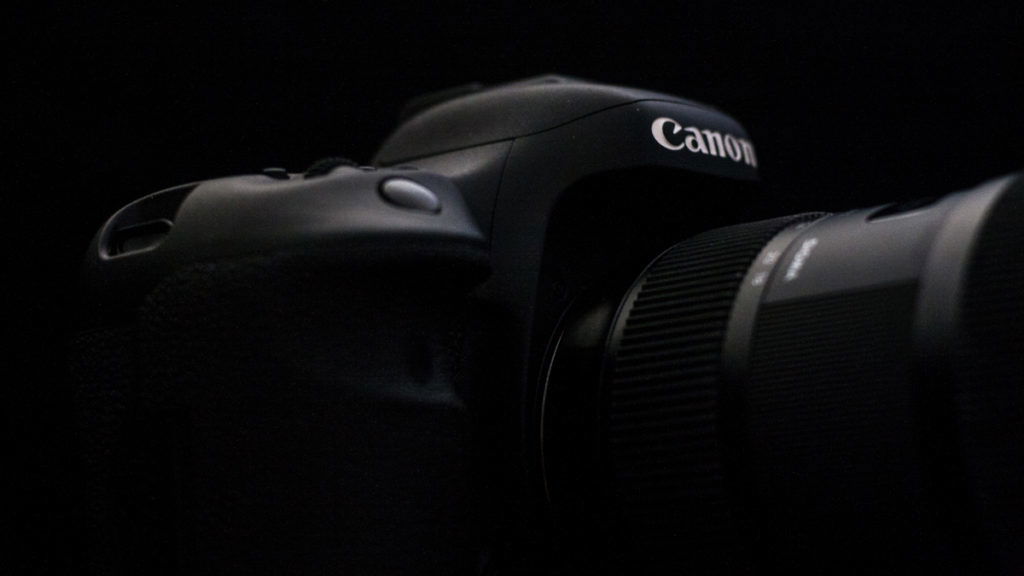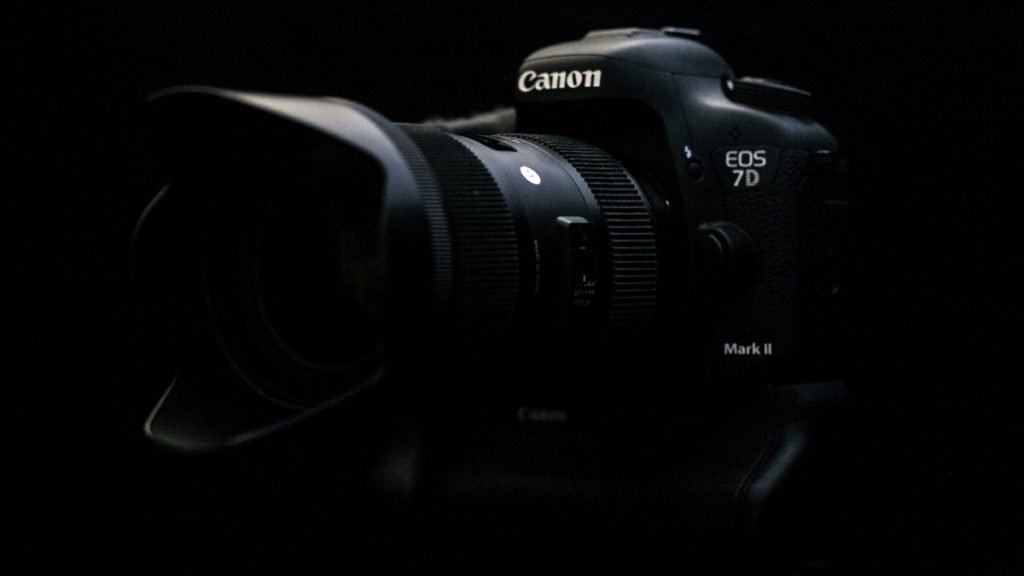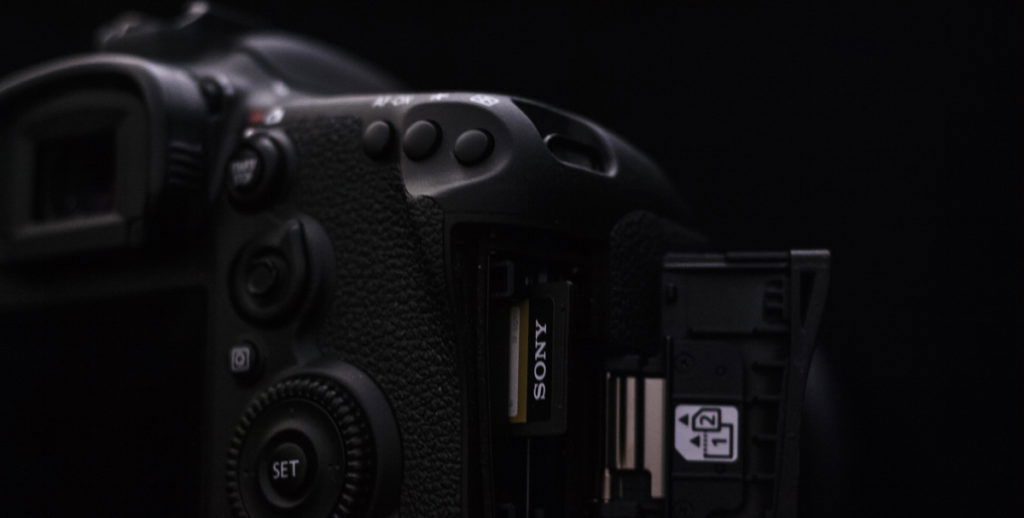Canon 7D Mark II Image Quality
Image quality is arguably the most important feature on any camera. The Canon 7D Mark II is a cropped sensor camera, meaning that there are some compromises for some gains. Since it is a crop sensor camera, images are a tad noisier than usual, but the density of the pixels allow for sharper images due to the larger number of pixels per square inch. Cropped sensors also avoid the corner parts of most lenses which are usually the weakest point of the lens itself, thus avoiding much of the vignetting and softness in the corners. Additionally, the cropped sensor gives more reach with any lens, thus a 50 mm lens on a full frame sensor is 50 mm, while on a cropped sensor it is 80 mm equivalent.
Shooting Photos
When purchasing a cropped sensor camera, one would expect noisier images when compared to a full frame counterpart. To be honest, I expected the same thing; I assumed that after ISO 3200 the images would be useless. I was wrong. I can safely shoot up to 8000 ISO and the sensor still holds its ground. Yes, there is some noise creeping in, but it isn’t anywhere near to being fatal. Compared to the 6D, albeit 2 years older, which is the cleanest full frame camera that Canon produces (not counting the 5DS, since it has a different purpose), the 7D Mark II is just a hair noisier. Being noisier than its full frame brother, however, is just physics at play: the pixel size is smaller, therefore it gathers less light, thus more noise. However, I shoot with the Canon 7D Mark II in all sorts of scenarios, ranging from concerts, to high contrast portraiture, and the dynamic range for a cropped sensor camera is impressive. It has some magenta fringing in the shadows if you recover them too much, but that scenario is really quite rare. On the color reproduction side, the sensor is a bit too excited about the blue tones. When clipping occurs, the blue tones tend to get clipped first for some reason, and this is mostly noticeable when one tries to recover highlights. Even though this applies to extreme scenarios, it should be considered when exposure to the right techniques are being performed. Besides this instance, the sensor holds its ground in color reproduction, and it does a great job in portraiture. When I was comparing it to the 6D, I didn’t notice any difference. But that is the case with most modern sensors nowadays.
Shooting Video
To be honest, the 7D Mark II doesn’t feature 4K video, nor does it have the fancy features that those movie-oriented cameras have, but the video quality is surprisingly good. Featuring 60 fps in 1080p is good for having a bit of room for slow motion, but generally it does a great job in the video department. The materials produced by the 7D Mark II are good enough for professional use, though they require a little more tinkering in post production. Having the Cinestyle picture profile from Technicolor makes a huge difference there, and the dynamic range in video mode is surprisingly good. The video is mostly shot with the 7D Mark II, only natural light used. Sadly, zebras and focus peaking are missing, which would make the work quite easier. However, it provides uncompressed HDMI output along with a headphone jack to monitor the audio, which is great.
Feel And Handling
When you look at it, the Canon 7D Mark II is basically a 5D Mark III body, with a cropped sensor inside. However, the resemblance between those cameras ends there. Having shot with a 6D, 5D Mark III, 70D, 60D, 1000D, I must say that the 7D Mark II is the most complete camera I’ve shot with so far. Haven’t had the chance to play with a 1Dx, so I can’t compare it to that one, but for all the others – I stand by my words. The overall build quality on the Canon 7D Mark II feels more solid, more premium when compared to its “bigger” brothers. According to the specs it has the best weather sealing of other Canon counterparts, with exception of the 1Dx. And given the amount of beers it has “drunk” during the times I’ve photographed concerts and parties, I can personally vouch for that.
Shutter
The first thing you’ll notice when comparing the Canon 7D Mark II to the 6D and 5D Mark III is the shutter, in terms of speed, sound, and vibration. The 6D is quiet when compared to the 5D Mark III, while the 5D Mark III is loud, clunky, and you can feel the vibration it produces in your shoulder. Then the burst rate comes into play, and you can feel the difference right away. By sound and feel, it seems more stable and precise, and yet it has 50% more frame rate. The buffer size is quite big, with cards fast enough you can shoot around 35-40 RAW files before the buffer fills up, while without a card, it stops at around 22-27 frames (depending on what you shoot). With 10 frames per second being the fastest burst rate of this camera, you can hold to a decent 3 second burst without any problems (while shooting RAW). When shooting .JPEG files only, excluding the RAW files, the buffer never fills up if you use a card that is faster than 60 MB/s. The shutter actuation time (the time that it takes for the mirror to go up, the shutter cycle to complete, and then the mirror to come back down) is quite fast, meaning that with shutter speeds above 1/200th of a second at 10 fps you can see everything that is going on while holding a burst, which is quite cool. Besides the fact that you can see everything, this also gives the focus system more time to track and adjust, contributing to more photos in focus.
Ergonomics
Just as most of the DSLR’s nowadays, the Canon 7D Mark II is just a hair too small for my hand to fit on the grip. My pinkie finger kind of sits on the edge, which makes it tiresome after prolonged use. However that is the case with every Canon DSLR that I’ve held in my hands, and the 7D Mark II is the biggest one of the bunch (excluding the 1Dx line, which has two grips). The solution for that issue is a battery grip – although it adds to the price point, it is completely worth it. Not only can I fit my whole hand with it, but the weight distribution becomes better, center of gravity is better, and the addition of another battery plus vertical grip and controls is a great time saver. Even though it adds to the weight, it doesn’t make it harder to use, due to better weight distribution and balancing. I feel like this camera is made to be used with a battery grip. Besides the grips themselves, the buttons are positioned quite logically, and everything is intuitive. The only button that seems a bit weirdly positioned is the M-Fn button, which requires getting your finger off the shutter button to press it, which can cost you pictures, so is therefore somehow pointless to use. I’ve set it to ISO because it is faster to access: the original ISO button (now marked with a notch) is still pressed with the index finger and you can’t really miss it. But when your hand gets tired, the M-Fn button is just easier to use because it requires less manoeuvring around.
Viewfinder
The viewfinder has 100% coverage, and it is quite large. The fun thing about it is the overlay, where all the information you need can be displayed on it, using an LCD overlay. The viewfinder is quite bright, especially if you use lenses that have wider apertures. The f/1.8 on the Sigma 18-35 looks marvellous in low light. One thing that bothers me is that the light meter is vertical and on the right side instead of it being down. Also it is quite smaller than the bottom bar, which isn’t really intuitive in the beginning, but I got used to it quite quickly.
Focus
One Shot and Servo
According to Canon, it has the most advanced focus system built in a camera that isn’t the 1Dx. That is actually true. However, it isn’t all dandy as it sounds on paper. Yes, it focuses ridiculously fast. Yes, it does track fast moving subjects without any issues. And the 65 cross type points which cover almost the whole frame are a great addition, and one can select them and each one within seconds. But that focus system is delicate and somewhat discriminatory. Let me elaborate. I own a Sigma 18-35mm f/1.8 Art lens, a marvellous piece of glass. Razor sharp across the board. However the 7D Mark II won’t focus properly with it for the life of it. Yes, it is a third party manufacturer, and some incompatibilities are expected. But the whole Sigma Art line doesn’t work with the Canon 7D Mark II, many of the Tamron lenses don’t work well either, nor does Tokina. The only exception is in Live View, where it focuses perfectly. Don’t get me wrong, the camera will function, but the focus is completely inaccurate, sometimes it will front focus by a meter, other times it will back focus by a meter. On-target shots occur around 2-3 times out of 10 tries. Focus with Sigma Art series seems to improve in servo mode with a group of focus points. It will focus great with most of the Canon lenses, yes, but not all of them. See, not every Canon lens can utilise all the 65 points, and not every Canon lens will provide consistent results. If you ask me, the complexity of that focus system comes at a price which means lens limitations. On an additional note, the focus accuracy on the 7D Mark II increases with the focal length, meaning that it focuses better with telephoto lenses rather than wide angle lenses. Anything below 50 mm and the focusing accuracy is reduced. However, when it comes to servo, oh boy, that is a different ball game. Not only is servo mode more accurate than one shot (yes, even on stationary targets), it just behaves like focus on steroids. Interestingly, when the rare occasion of missing a target on the servo actually occurs, it is mostly on slow moving targets. But that is extremely rare. Additionally, there are “cases,” which are basically presets, with which you can fine tune your servo focus, but at the end of the day you’ll find yourself using one of those the whole time, basically the one which suits your shooting style the most.
Live View (Dual Pixel CMOS)
The live view, the Dual Pixel CMOS focus, is a different story. The live view focus in DSLRs before the 70D and the 7D Mark II introduced was quite slow, clunky, and almost nonexistent during video shooting. The 7D Mark II features the Dual Pixel CMOS, which makes autofocus during live view (and video recording) a breeze. Yes, it is not perfect, but it has served me well for 80% of situations. It tracks faces nicely – you can even pick out a face from a crowd and have the camera track that one. The focus is as fast as your lens is. That is something I’ve never seen before in a DSLR, and frankly I love it. If it weren’t for that focus system, the issues with lenses that aren’t compatible with the 7D Mark II would be a deal breaker.
Additional Features
Cool Things:
GPS
The GPS on this camera is quite accurate, but one needs to be careful with the refresh times. If it is set to 1 second, it eats the battery quite rapidly. However if it is set to 5 minutes refresh time it becomes inaccurate since it needs some time to find the location again. I’ve found that something around 1 minute refresh time works best.
Flicker Detection
The camera has the capability to detect flickers from artificial light and release the shutter when the light hits the peak. This reduces the burst rate, but ensures maximum light captured during exposures. It’s quite a cool feature if you ask me.
Two Card Slots
Just like the 5D Mark II, the Canon 7D Mark II features two card slots, one SD and one CF card slot. However the SD card slot is the fastest one in the Canon line, with the capability to write at speeds of around 100 MB/s, while the 5D Mark II tops out at around 60 MB/s.
Built-in Intervalometer
It was about time that manufacturers started putting software intervalometers for timelapses and such. It is really simple, and it works like a charm.
Silent Mode
Unlike the 5D Mark III, the silent mode of the Canon 7D Mark II is actually quite silent. Most of the sound is greatly reduced and dampened, and it is shifted toward lower frequencies, thus it is less noticeable. If I were to sit 3 meters away from you in an average cafe, you wouldn’t hear the shutter releasing.
Missing/Pointless Things:
Wi-Fi
Sadly there isn’t built in Wi-Fi connectivity, which is kind of sad really. It would provide quite the amount of options if it had Wi-Fi capabilities.
Touchscreen display
The Canon EOS 80D has a cool screen, which has a capacitive touchscreen and it can be flipped out and swivelled. It is quite useful for video and for shooting in awkward positions (for example if you hold the camera above your head). The 7D Mark II has none of that, the screen is a regular old-school one, albeit quite detailed and bright just like any other camera.
Built In Flash
I’m still not sure why it is there. Besides the fact that it is useless, it could be easily replaced with a Wi-Fi module and solve way more problems.
Bulb Mode
I don’t understand why this still exists as a separate mode. Why not just remove the 30 second shutter speed limiter in other modes and be done with it?
AF Assist Lamp
I think every camera should have one. Not sure why Canon is allergic to AF assist lamps.
Summary of the Canon 7D Mark II
The Canon 7D Mark II would be one of the best all around cameras on the market, at least according to my standards. For around $2000 you can get a 7D Mark II with battery grip and a lens. No, it is not a full frame camera, but then again lenses like the 18-35mm f/1.8 from Sigma make up for it quite nicely. If you are an all-around photographer like me, I couldn’t recommend a better camera for the money. You have excellent image quality, high frame rate, excellent video, a body built like a tank, quite revolutionary focus system, and so forth. Yes, there are some quirks here and there, but no camera is perfect. Simply put, you can use it for everything, and it will hold its ground without any issues.
